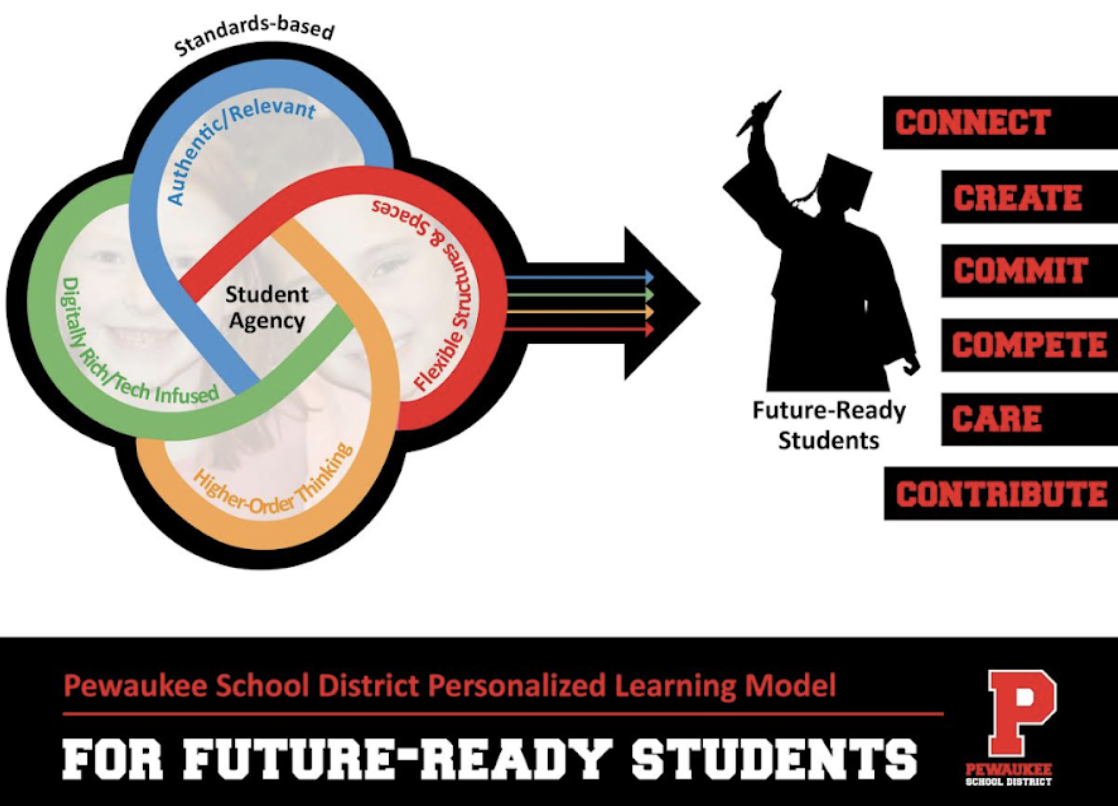Practice What You Preach: Personalizing Professional Learning for Continuous Improvementby Danielle Bosanec, Chief Academic Officer, Pewaukee School District “Every student can learn, just not on the same day, or in the same way.” This quote by George Evans emphasizes the incredibly important work of teaching and learning. Teaching and learning, however, does not only apply to students in today’s education systems. While personalized learning has been a popular topic in classrooms for a number of years, it is only recently that many school districts have begun to apply similar personalized learning practices to the adult learners in their organization. This article provides research background on adult learning and shares insights learned by the Pewaukee School District in our journey toward personalized learning for staff. Malcolm Knowles, the most referenced researcher on adult learners, coined the art and science of teaching adults as andragogy in 1968. There are several key principles to be considered when designing adult learning. Below is a summary of andragogy principles and an interpretation of the implications for designing professional development (Knowles, Holton, & Swanson, 2015). 1. Need to Know: Adults need to know the reason for learning.
With these concepts in mind, and responding to feedback from our faculty, in 2016 the Pewaukee School District designed and implemented professional development with the following goals:
The core elements of the personalized professional development model designed by the Pewaukee School District was based on the concept of “freedom within fences”. Our district mission of “Opening The Door To Each Child’s Future”, was the fence upon which our professional development was based (Figure 1). The elements required for all staff creating the “fence” components include:
“Freedom” components within the model include:
Over the course of five professional development days throughout the school year, staff engages in curriculum development, building initiatives, wellness activities, and various professional development aligned to the Personalized Learning Guidelines. The agenda for each day is developed a few weeks in advance and staff sign up for sessions of interest. Session leaders know which staff will be attending and tailor learning to those staff members. Through an internal website, staff are able to view the agenda, sign up for activities, track completed hours, and retrieve archived materials from sessions they did or did not attend. Additionally, each staff member is required to complete 16 hours of professional development outside of their scheduled contract. Staff give input on the types of professional learning experiences they want to engage in after hours and during the summer. Opportunities have included bringing in trainings from organizations that align with district goals, book studies, Twitter chats, home-grown learning opportunities, and much more. Over the course of the two years since implementation the total number of hours contractually required to complete by all staff was just over 6,200 hours. The actual amount of time staff engaged in professional learning was over 10,800. Staff chose to engage in additional learning without additional compensation because they viewed the learning opportunities as relevant, important, and of high quality. Survey results of personalizing professional development has also been supportive of the model. Staff engagement surveys showed that satisfaction of professional development shifted from 72.2% satisfaction to 96.2% in just one year. Both new staff and veteran staff regularly provide positive feedback on the system as well. These positive results demonstrate that the challenges of developing a model like this, including the logistical details and allocating resources to support the model, is well worth the effort. As leaders it is critical to practice what we preach. If we want our teachers to meet the needs of each child in our system, it is essential we do the same for the needs of each of our staff members. The model the Pewaukee School District has created continues to evolve to meet the needs of our staff. Our experience is just one example of how personalizing professional learning can improve culture, staff engagement, and staff commitment to personalizing the learning for our students. Our experience demonstrates that applying the principles of adult learning can yield positive results in a public school system. For more information, please contact Danielle Bosanec directly at [email protected] The Pewaukee School District model of personalized professional learning will be presented at the SLATE Conference on December 4, 2018. References: Knowles, M. S., F., H. I., & Swanson, R. A. (2015). The adult learner: The definitive classic in adult education and human resource development. Milton Park, Abingdon, Oxon: Routledge. Sinek, S. (2011). Start with why how great leaders inspire everyone to take action.
Read more at:
Elementary Edition - Secondary Edition - District Level Edition
|


